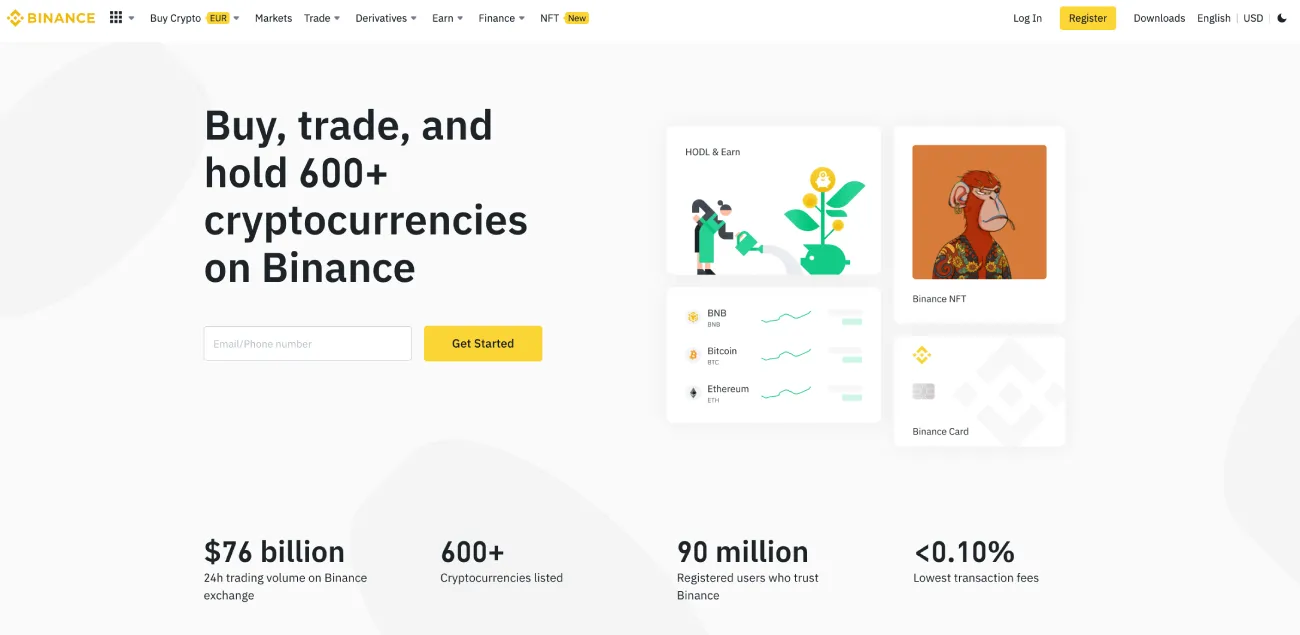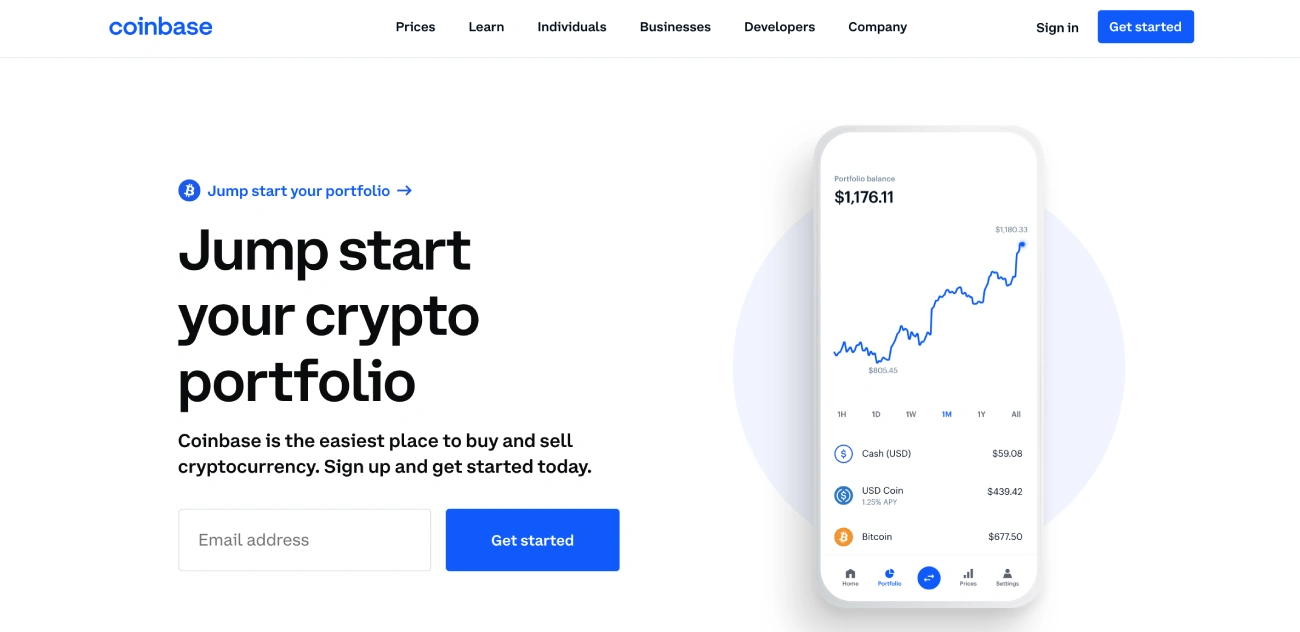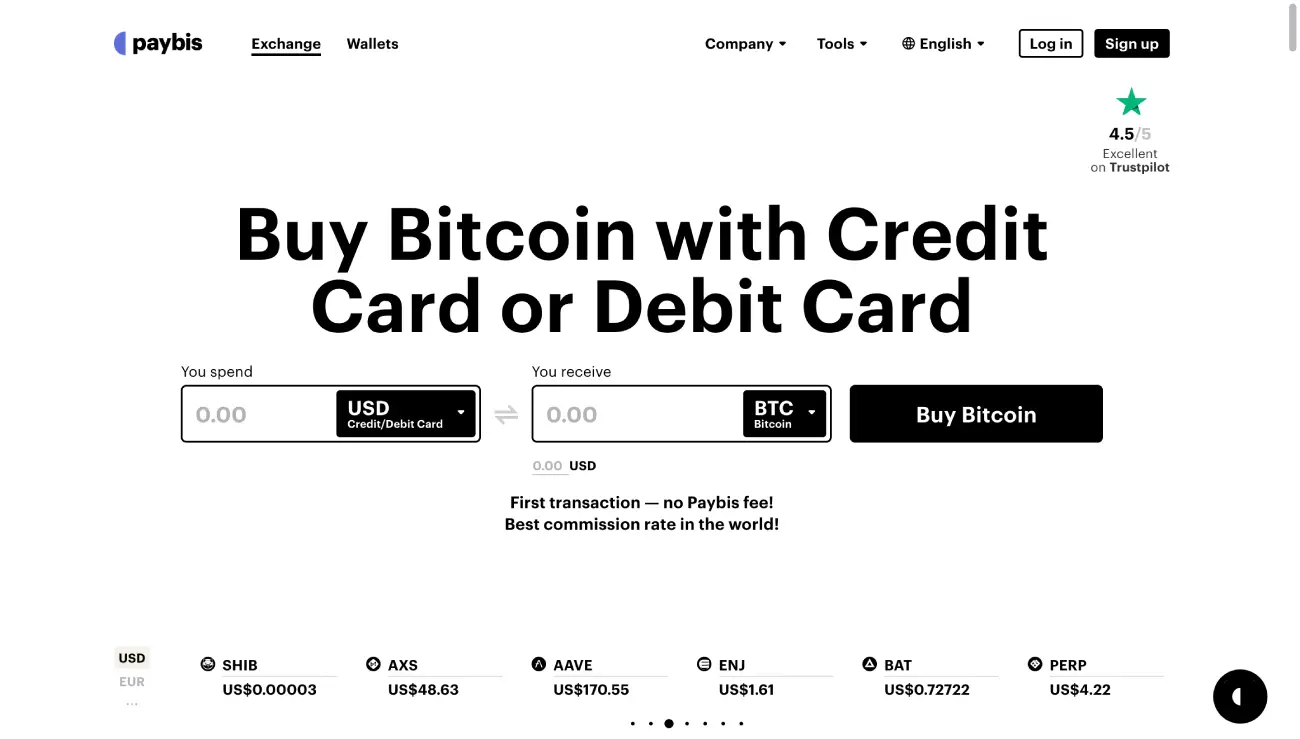
How to Buy Status [The Ultimate Guide 2023]
Status is the world’s first decentralized mobile and desktop client for Ethereum. It’s an open-source messaging platform and a web 3.0 browser that allows users to interact with DApps running on Ethereum (ETH) blockchain.
Status enables peer-to-peer payments and access to encrypted, secure communication within a single network.
Status (SNT) is an Ethereum token that powers Status Network.
Read on to learn everything you need to know about Status and where, why, and how to buy Status in a few simple steps.
Let’s get right to it!
Status Pros & Cons
Pros
- Secure: Offers a secure, encrypted messaging platform.
- Easy transfers: Investors can quickly perform cross-border transfers and exchanges between wallets within a few minutes.
- Responsive App: It’s accessible as a mobile and web application.
- Better Monitor: This allows for more market control and surveillance.
- Digital Independence: By utilizing the uPort plugin, users get digital independence.
- Community-based: It’s a community-based platform.
Cons
- No Backing: The SNT token is not backed by any backing commodity.
- Pay for Notifications: You must pay a small fee to receive push notifications.
What Is Status (SNT)

Status (SNT) is an open-source messaging platform and mobile interface that allows users to interact with DApps running on Ethereum (ETH) blockchain.
The Status Platform is built on Peer-to-Peer (P2P) technologies and facilitates access to over 2000 Ethereum DApps from an app installed on your mobile phone or tablet. The Status platform is subdivided into three main parts:
- Open-source messaging platform: Send and receive P2P encrypted messages
- Mobile interface: Connect and interact with thousands of DApps
- Status Wallet: Store and control private crypto-assets.
The Status Network Token (SNT) is a utility token that powers the network. SNT is used to opt-in to use Status curation mechanisms (e.g., content or DApps), sell in the Status Teller Network, list DApps, gain exposure in the DApp Directory, select and receive push notifications, propose and vote on Status governance issues, etc.
The Status team encourages decentralized web adoption while adhering to principles like privacy, transparency, security, inclusion, and censorship resistance.
Status’s main objective is to accelerate the widespread adoption of Ethereum DApps by making DApps discovery and usage straightforward for the fast-expanding smartphone user group. In addition to the app, the Status community also provides infrastructure tools to enable everyone to participate in the community and jointly create a better web. The primary platform components functioning together to keep Status running, accessible, and secure for all its users include Incubate, Studio, Embark, Nimbus, and Keycard.
Incubate: It offers funding, technical support, coaching, legal and regulatory compliance, product design, marketing and communication, and other resources to early-stage open-source startups.
Studio: An integrated environment for developers and those interested in learning more about DApp development.
Embark: A simple development framework for creating and deploying DApps.
Nimbus: An Ethereum 2.0 research project and light client implementation intended for embedded systems and resource-limited hardware.
Keycard: Status hardware wallet used for frictionless, secure, and contactless transactions. It supports SNT, ETH, and several ERC-20 tokens. Its code is open-source, so anyone can use and modify it as needed.
What Makes Status Unique
Status is the first decentralized mobile and desktop client built on Ethereum that allows you to connect to the entire Ethereum network right in the palm of your hand. The Status interface enables users to communicate with over 2000 DApps running on the Ethereum network. Status is used to send and receive encrypted P2P messages, make payments, and for smart contracts.
Status uses state-of-the-art technology and a P2P decentralization model to ensure users’ data and a private, secure method of communication.
Status employs a users-as-stakeholders network, where users are in control of what information they share and can vote on the network’s future development.
The platform’s design allows the behavior of its social network and software to be aligned with the interests of its users in contrast to legacy social network models that only empower the owners and advertisers.
Status Founders
Jarrad Hope and Carl Bennets founded Status on January 4th, 2017, in Crypto Valley, Zug, Switzerland. Status has more than 70 full-time team members and experienced advisors, and the company’s current COO is Nabil Naghdy, a former product manager at Google.
The Status founders aimed to promote public adoption of the Ethereum blockchain and its DApps by creating a gateway for mobile users to engage with the Ethereum blockchain seamlessly.
The duo has worked together on various blockchain projects.
Status has been fully self-funded by the project’s founders, except for an early Development Grant from the Ethereum Foundation.
Status’ Initial Coin Offering (ICO) collected 182,000 ETH and generated about 1.63 billion tokens on the network. However, not everything happened as planned. Before the sale officially began, many people sent transactions to the stated smart contract. The backlog grew as more customers hurried to complete their transactions out of fear of losing out, forcing many to pay additional fees or fail transactions.
Despite concerns that the first launch was incorrect, SNT is still a popular cryptocurrency.
How Is the Status Network Secured
Built on the X3DH and Double Ratchet standards from Open Whisper Systems, Status features perfect forward secrecy by default and end-to-end encryption. Whisper is an open-source, Peer-to-Peer protocol and end-to-end decryption service requiring a special kind of Ethereum node to store and transfer messages. Status uses the Whisper V5 protocol to delegate nodes and support decentralized chat to ensure additional security and flexibility for users on the Status (SNT) network.
The user’s identification in Status begins with a locally produced cryptographic keypair that is password secured. Status also employs the Waku protocol for Peer-to-Peer (P2P) communication. Waku depends on a network of peers to route the messages.
Status (SNT) Tokenomics

According to data on CoinStats, the current circulating supply of Status SNT is at 3,940,483,788 SNT, with a total supply of 6,804,870,174 SNT. As of June 2022, the market cap is around $118.5 million.
You can also check the SNT Price, 24-hour trading volume, market cap, circulating supply, total supply, max. supply, historical statistics, etc., on CoinStats, and get real-time updates on Status SNT current price.
SNT is an ERC-20 token used to access and power the Status Network’s decentralized services. The Messari Disclosures Registry verifies it as an open-source project that anyone can use for their individual needs.
Where to Buy Status
Binance and KuCoin are the most popular cryptocurrency exchanges in terms of trading volume to purchase Status. Other exchanges where you can buy Status SNT include Huobi Global, Bittrex, OKEx, ZG.com, BiONE, Upbit, and Bithumb.
SNT has been listed on several crypto exchanges, but unlike other major cryptocurrencies, it cannot be directly purchased with fiat currency. You can buy Status by first buying Bitcoin from any fiat-to-crypto exchanges and then transfer to the exchange that offers to trade this coin.
Before choosing an exchange, perform your own research and check the exchange’s reputation and if it offers the features you want, such as low fees, an easy-to-use platform, and 24-hour customer support. Also, consider if the cryptocurrency exchange allows you to buy crypto with your preferred deposit methods, such as a credit debit card, another cryptocurrency, or a bank transfer.
Most exchanges require you to follow the KYC procedure and provide personal information such as your name, email address, phone number, home address, and a copy of your government ID or passport to trade cryptocurrencies.
Best Cryptocurrency Exchanges to Buy Status
Below, we’ve listed the top 5 exchanges where you can purchase Status (SNT) with a credit card, debit card, or Bitcoin (BTC).
Binance

Binance is one of the major cryptocurrency exchanges in terms of trading volume. Low fees and high liquidity are among the advantages of buying Status SNT on Binance, allowing you to quickly buy and sell digital assets to take advantage of market opportunities.
US customers aren’t permitted to buy Status on this platform; instead, it’s best suited to users from Canada, Australia, the United Kingdom, Singapore, etc.
KuCoin

KuCoin is a competitive cryptocurrency exchange in terms of fees and services. It has developed from its early days of crypto-to-crypto trading to offer several services, including credit or debit card purchases. KuCoin allows you to buy Status (SNT) and 500+ tokens, including new tokens.
The exchange currently accepts United States residents.
Coinbase

Coinbase is a NASDAQ-listed crypto exchange and one of the most sought-after exchanges in the United States, with users from over 100 countries, including Canada, Singapore, and Australia.
Over 70 million Coinbase users have traded over 500 billion USD in volume. Coinbase prioritizes security, with ~98% of user funds held in cold storage. The platform is simple to use and supports trading over 200 cryptocurrencies, including Status (SNT). It’s accessible on iOS, Android, and PC.
Coinbase is not registered with the US Securities and Exchange Commission or the US Commodity Futures Trading Commission. This exchange currently accepts citizens of the United States, except for Hawaii.
Paybis

Paybis is a global cryptocurrency exchange headquartered in Glasgow, Scotland. It operates in over 180 countries and supports 50+ cryptocurrencies, including STATUS. Paybis is a terrific option for frequent travelers wishing to purchase or sell cryptocurrencies on the go.
Paybis acts as a broker for its customers. It doesn’t presently offer a cryptocurrency wallet but intends to do so in the future. Users need to be familiar with cryptocurrencies and understand how to transfer funds to an external wallet.
WazirX
Next on our rundown is WazirX, an Indian cryptocurrency exchange established in 2018. The platform became accessible to users worldwide in 2019,
when Binance acquired it.

WazirX is a safe and simple-to-use platform with an easy sign-up process. Users can purchase over 150 cryptocurrencies on the marketplace, including Status (SNT). Bank transfers, net banking, and UPI are the most common payment methods.
WazirX is accessible via desktop and Android or iOS mobile devices. Note that WazirX is prohibited for US residents.
How to Buy Status (SNT)
Follow our step-by-step guide below to buy Status right away!

Step #1: Choose a Crypto Exchange
You can buy and sell Status on various crypto exchanges. You must compare them to pick the best trading platform for your investment needs. Also, ensure the cryptocurrency exchange accepts your desired payment method, such as a credit or debit card, another cryptocurrency, or a bank transfer. Some exchanges provide advanced trading tools and services such as limit and market orders, crypto loans, and crypto staking. A limit order will let you buy Status when the price of Status reaches your entered value.
Step #2: Registration
After selecting a trustworthy exchange, the next step is registering a trading account with your email address and creating a strong password to trade SNT. Personal information such as your name, email address, contact number, social security number, home address, and a copy of your driver’s license, passport, or government-issued ID is required for most purchases on centralized exchanges. If you intend to purchase Status using fiat currencies from your bank account, you must provide this information to get verified and start trading.
Check your email for the account verification code after submitting your account creation application and enter the code to verify your account. We recommend activating two-factor authentication (2FA) to keep your digital assets secure.
Step #3: Fund Your Account
Once your account gets verified, you must deposit funds to buy SNT tokens and other cryptocurrencies. Simply select your preferred payment option, such as a bank transfer, credit or debit card, e-wallets, etc. The platform, location, and preferences will all influence the payment method you pick.
Bank Account
Although a bank transfer from a local bank account is often cost-free, you should still check with the exchange before making a deposit.
Credit Debit Card
To top up your account, simply link a card. After connecting your credit or debit card, you can use it to make a one-time purchase or set up recurring payments. However, you should know that using your credit card to buy Bitcoin or other cryptocurrencies may entail additional fees.
Cryptocurrency
You can buy Status by trading it for other major cryptocurrencies like BTC or a stablecoin. Since this varies between exchanges, you’ll need to look for SNT on the spot market to view the available trading pairs.
Step #4: Buy Status SNT
You’re now all set to buy Status SNT. The process of purchasing Status is similar to buying other cryptocurrencies across most platforms. On the top menu, search for the Status SNT token in the search box, then check the SNT price before clicking the “Buy SNT” button.
The next step is to input the amount of SNT to be purchased or the fiat amount to be spent. Most exchanges convert the amount so that investors know how much Status they will get. It may be easier to use the percentage buttons below the input box, i.e., press 50% if you’d like to exchange 50% of your Bitcoin for SNT. Once you’re happy with the amount, click confirm and press the green button marked ‘buy SNT.’ Your order will be filled immediately.
If you don’t already own a CoinStats account, register one to buy Status from CoinStats.
How to Store SNT
Once you’ve completed your Status purchase, the following step is to choose a secure wallet to store your tokens. Your coins can be kept in your brokerage exchange wallet, but we strongly advise that you create a private wallet with your own private keys. You can choose between software wallets and hardware wallets based on your investing preferences.
CoinStats Wallet is one of the best software wallets for managing all your DeFi and crypto in one place – a single crypto wallet for buying, selling, swapping, tracking, and earning on your crypto!
Hardware wallets, commonly called cold wallets, such as the Ledger or Trezor, are the most secure options since they offer secure offline storage and backup capabilities. These are best suited to experienced users with a significant amount of tokens.
How to Sell Status
You can cash out your SNT on the same exchange where you purchased it by following the same steps:
1. Sign in to the exchange account where you have SNT
Compare crypto exchanges to decide where to sell your Status SNT if you’ve stored it in a digital wallet.
2. Place a sell order
Select the amount of SNT you want to sell.
3. Complete your transaction
Complete the SNT sale by agreeing on the selling price and costs.
Is Status a Good Investment
If you’re considering purchasing SNT, keep the following points in mind:
DApp Availability: The DApps hosted on the network account for the Status platform’s most use-cases (and resulting popularity). DApps can be registered on Status by anybody. On the Status website, you can stay informed about the linked DApps.
Competition: Status competes not just with smartphone-based IM services on the blockchain but also with those on the traditional web, including Facebook Messenger, WeChat, WhatsApp, Kik, Telegram, etc. Status also competes with app stores such as Google Play and iOS Store, which have considerably more brand awareness and millions of apps accessible for download.
Push Notification Payment: Reconfiguring how push notifications are stored and transmitted on a decentralized system is critical to the Status ecosystem. A user must either make a microtransaction or watch an advertisement to receive a decentralized push notification. Given that most push notifications from centralized applications are free, this is a significant barrier to overcome. This might have a huge impact on regular social media users.
Closing Thoughts
Status is a mobile client that puts the whole Ethereum network at your fingertips. Status users have access to any existing and future decentralized applications that operate on Ethereum; therefore, the possibilities for this project are endless.
Status is an open-source, community-driven project that invites everyone to contribute to its operating system and the future of the decentralized web. Status has reimagined the social network by giving its members the freedom to select how the platform will be regulated and evolved.
You can also visit our CoinStats blog to learn more about wallets, cryptocurrency exchanges, portfolio trackers, tokens, etc., and explore our in-depth buying guides on how to buy various cryptocurrencies, such as How to Buy Floki Inu, What Is DeFi, How to Buy Cryptocurrency, etc.
Investment Advice Disclaimer: The information contained on this website is provided to you solely for informational purposes and does not constitute a recommendation by CoinStats to buy, sell, or hold any securities, financial product, or instrument mentioned in the content. This guide is not an endorsement of cryptocurrency or any specific provider, service, or offering, nor does it constitute investment advice, financial advice, trading advice, or any other type of advice.
Cryptocurrency is a highly volatile market and is sensitive to secondary activity. You should be aware that you may lose a significant portion of your portfolio, so it is important to perform due diligence, obtain your own advice, and only invest what you can afford to lose. There are significant risks involved in trading CFDs, stocks, and cryptocurrencies. Between 74-89% of retail investor accounts lose money when trading CFDs. Performance is unpredictable, and past performance is no guarantee of future performance. You should consider your own circumstances and obtain your own advice before making any investment. You should also verify the nature of any product or service (including its legal Status and relevant regulatory requirements) and consult the relevant regulators’ websites before making any decision.






